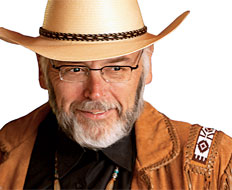Well, here it is: May. The season for trade shows is really starting to heat up as is the weather. It’s when travel becomes not just a question of if there will be airline delays, but how long they’ll be. So, the subject of this month’s diatribe is trade shows and their prime purpose: networking.
Let’s start with what I know best, which is how McDonald’s used to deal with the above, and then discuss how you should do it today.
In the really old days, this was known as talking with people for fun and profit. We didn’t have the term networking. We had local co-op meetings where the operators in a television market got together to trade war stories and decide how to spend their marketing money. As a part of this, they shared successes and failures. Operators who had been around for a while mentored newer operators, listening to their problems and suggesting solutions. The same situation occurred on a national level with a national co-op of elected operators who met several times a year for much the same purpose.
There were very few trade organizations, but that was OK, as McDonald’s avoided them like the plague. The feeling was that we had invented the business, so why tell our competitors how to be successful, how to solve the problems, and how to avoid mistakes? And, for heaven’s sake, what could our competitors help us with? We were very closed off to the press, trade organizations, and trade publications. Company people were not even allowed to talk to the press without specific permission.
The company performed the duties of networking in those days by communicating with the operators in co-op meetings and by forming a local-store marketing department that gathered and distributed ideas that were successful on an individual store basis.
Every two years, however, there was a World Wide Convention held for the express purpose of communicating what was new. Sort of an intra trade show for anyone involved with McDonald’s. All three legs of the stool attended: the company, the operators, and the suppliers. And all three heard all the information. McDonald’s felt that everyone involved should have the same information. This was the prime opportunity for everyone to network.
Now, I have been to a lot of trade shows and conventions in my career, both at McDonald’s and in the nine years since my retirement. Trade shows and conventions are wonderful for networking, if done correctly.
I’ve been to the ones where cocktails and sightseeing seemed to be the order of business, and I’ve been to the good ones, where information and networking were the business. Here are my thoughts on how to succeed with a trade show.
As McDonald’s did, everyone should get to see everything. No exclusive sessions. It’s a great opportunity to show the latest innovations, equipment, and ideas, with explanations by the people who invented them. Keep the sessions informal, and allow questions from the floor. Make it more of a round table than a presentation. So what if it runs over a little?
Also, keep the crowd together. Have a game night where everyone interacts, rather than a dinner with people trapped at tables of eight. Make the layout of the show cozy, not spread out so people can’t find each other. Provide golf cart transportation at large shows. Some of us need help.
Consider the Bergold shuffle: Make it around the room at least once to see everyone. And make it clear that the centerpieces are not to be taken at the end of the evening. One of my friends lost his sports coat when he left it on the back of a chair and someone thought it was a giveaway.
If you are a convention or show attendee and you do not have a room at the show hotel, don’t worry. I got back to my room once to find all my stuff in the hall and a note to see the front desk—seems that someone showed up and took my room. However, outside were a convertible and a key to my own condo on the beach for the two weeks we would be there. And the finest restaurant on the island was part of my condo complex. They could have my old room.
Networking is making sure you are keeping up with communication, also. Return all calls within 24 hours. Return all e-mails instantly. Read and act upon snail mail right away. Never handle a piece of paper twice. Once upon a time we had no e-mail or cell phones. We had little pink message slips and we called in for messages once a day if on the road. But, then again, we could think while traveling, instead of having electronics plugged into our heads all day.
You know, networking is really just the introduction of people to each other and the resulting communication and potential gain. This article is a form of networking. You get an introduction to how I think and I get lots of e-mails, particularly when you disagree with me. And maybe I get a speech gig if you’re interested in me expounding on one or more of my pearls.
Our computers are the easiest way to network today. We can talk to people we never would have known of or been introduced to years ago. Look at opportunities like Facebook. Just don’t tell me what time you gargled—too much info.
What we really need is networking committees in our industry to handle topics like menu labeling, packaging, and energy conservation. We have to regulate ourselves and find the answers before the Feds do it for us. Heaven help us if that happens. Can you imagine 50 sets of rules and one from Washington?
Network away and go to our industry trade shows. I bet you will learn something and meet some very nice people.
Happy Trails and a Peaceful Life out there at the show.













